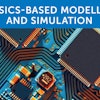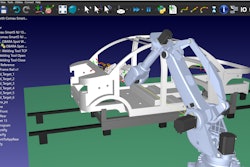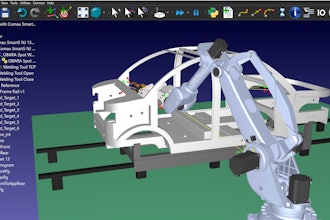Sales force automation streamlines the sales process, equipping manufacturers with the tools they need to create more effective and more efficient sales programs. From product information and customer management to order taking and inventory control, first-rate sales force automation solutions are designed to handle nearly every aspect of the sales cycle.
But to fully leverage the benefits of sales force automation, manufacturers need to understand how to properly apply these tools across their customer bases. Since different types of customers require different sales approaches, sales force automation solutions vary according to the size and nature of the account.
The Sales Force Automation Pyramid
Most manufacturers have a multi-tiered sales program. While some customers require face-to-face engagement with sales staff, others are capable of managing their own ordering requirements via online or mobile ordering platforms.
In general, manufacturing sales fall across a sales force automation pyramid, with each level representing different types of customers and sales strategies.
1. Large Accounts (Top Level)
Large accounts are at the top of the sales force automation pyramid. Although there are fewer of them, these accounts generate a high volume of sales throughout the year and require face-to-face relationships with field-based sales representatives.
As the portability of technology has improved, it’s become common for sales personnel to leverage sales force automation solutions in the field. The simplest way for field staff to utilize these solutions is by accessing the company website via a laptop or tablet device.
But field teams also need capabilities that may not be appropriate for customers to view. In these instances, sales force automation solutions can be engineered specifically for sales team members, enabling them to manage credit terms, sales tax exemptions and other details that are essential for selling to large accounts.
Equipped with a basic tablet device and sales force automation technology, field sales teams can take orders, check order status, perform inventory controls, deliver sales presentations, provide product specifications and enhance customer experiences with creative displays (e.g. HD/3D product imaging).
2. Medium-sized Accounts (Middle Level)
Mid-level or medium accounts are smaller than large accounts, but they are no less important to the company’s success. Although they may be capable of performing self-service online or on a mobile device, mid-level customers may have personalized needs or special order requests that require the assistance of a trained sales representative.
Rather than engaging in face-to-face or field-based sales with these customers, most manufacturers provide a call center for mid-level accounts. Leveraging the expertise and assistance of call center personnel, customers are able to place or cancel orders, change orders or payments terms, establish a new payment method and complete other tasks that typically aren’t available through the company’s eCommerce site.
To properly serve medium-sized accounts, manufacturers need sales force automation technology that enables phone-based sales activities and makes it easy for call center staff to assist customers with their requests. This typically includes enterprise systems with features that promote ease-of-use and allow call center staff to quickly locate customers’ order histories or help them place new orders.
3. Small Accounts (Lower Level)
Even though small accounts occupy the bottom tier of the sales force automation pyramid, they represent the bulk of most manufacturers’ sales transactions. Since it’s impractical to assign field staff or call center representatives to every one of these transactions, it’s common for manufacturers to create an optimized eCommerce site that enables these customers to place orders online.
The emphasis in sales force automation for small accounts should be on delivering Web and mobile experiences that eliminate the need for customers to interact with sales staff. The only phone-based interactions that should occur are when the customer has a problem or a concern that they can’t resolve on their own.
From a technology perspective, a robust eCommerce platform gives small accounts everything they need to make informed buying decisions and to complete their orders. In addition to high-quality product images and content, it’s important to make sure that Web and mobile customers have access to exceptional search, purchasing and personalization features.
Additional Sales Force Automation Tips for Field-based Sales Reps
Sales force automation gives manufacturers the ability to increase bottom line impact by improving the quality and depth of customer experiences, regardless of account size. But it also allows manufacturers to improve the efficiency of field-based sales personnel.
For example, sales force automation solutions can enable field staff to track expenses, schedule customer visits and perform other tasks that support their ability to service and convert large accounts. The real-time nature of sales force automation tools give manufacturers the ability to send updated materials or customer information to field reps dispersed across a broad geographic range, ensuring that the organization’s sales teams always have the most current information at their fingertips.
But to be effective, manufacturers need to customize their sales force automation tools to their unique sales environments. From optimizing eCommerce platforms to equipping field-based sales teams with a full range of features and capabilities, manufacturers can achieve the greatest measure of success by tailoring technology to their operating needs and customer requirements.























